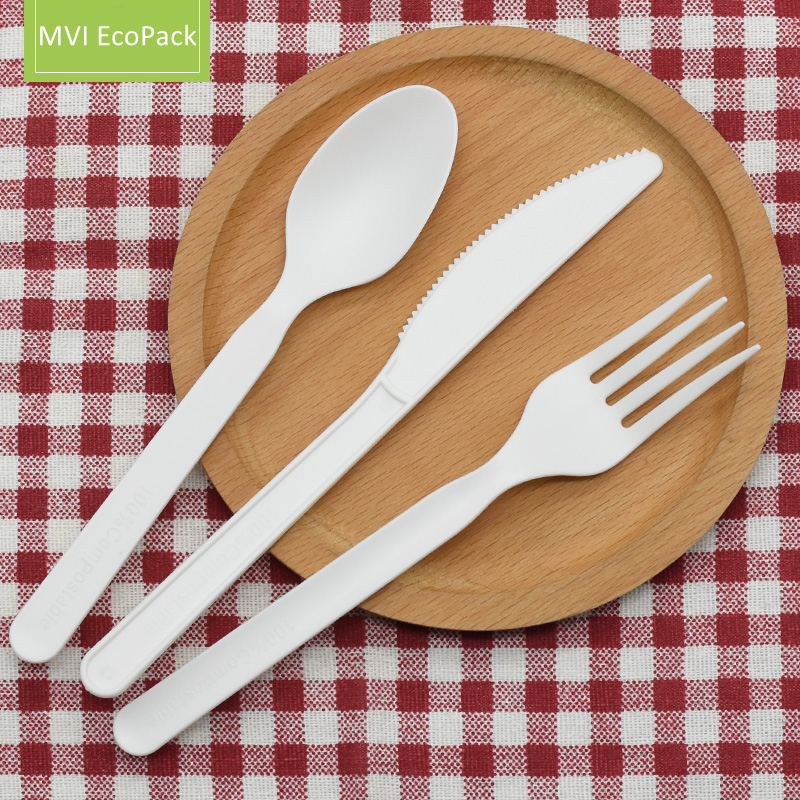With the implementation of plastic bans around the world, people are looking for environmentally friendly alternatives to disposable plastic tableware. Various kinds of bioplastic cutlery began to appear on the market as eco-friendly alternatives to disposable plastic cutlery. These bioplastic cutlery have similar looks. But what are the differences. Today, let’s compare two of the most commonly seen bioplastic cutlery CPLA Cutlery & PSM Cutlery.

(1) Raw Material
PSM stands for plant starch material, which is a hybrid material of plant starch and plastic filler(PP). Plastic fillers are required to strengthen corn starch resin so it performs adequately in use. There is no standard percentage of the material composition. Different manufacturers may use materials with different percentages of starch for production. The corn starch content may vary from 20% to 70%.
The raw material we use for CPLA cutlery is PLA (Poly Lactic Acid), which is a kind of bio-polymer that derives from the sugar in different kinds of plants. PLA is certified compostable & biodegradable.
(2) Compostability
CPLA cutlery is compostable. PSM cutlery is not compostable.
Some manufacturers may call PSM cutlery cornstarch cutlery and use the term biodegradable to describe it. In fact, PSM cutlery is not compostable. Using the term biodegradable and avoiding the term compostable could be misleading to the customers and consumers. Biodegradable only means that a product can degrade, but does not provide any info as to how long will it take to fully degrade. You may call regular plastic cutlery biodegradable, but it may take up to 100 years to degrade!
CPLA cutlery is certified compostable. It can be composted in industrial composting facilities within 180 days.
(3) Heat Resistance
CPLA cutlery can resist temperature up to 90°C/194F while PSM cutlery can resist temperature up to 104°C/220F.
(4) Flexibility
PLA material itself is quite rigid and hard, but lack flexibility. PSM is more flexible than PLA material due to the PP added. If you bend the handle of a CPLA fork and a PSM fork, you can see that the CPLA fork will snap and break while the PSM fork will be more flexible and may be able to be bent till 90° without breaking.
(5) End of Life Options
Unlike plastic, corn starch material can also be disposed of through incineration, resulting in non-toxic smoke and a white residue that can be used as fertilizer.
After use, CPLA cutlery can be composted in industrial commercial composting facilities within 180 days. Its end products are water, carbon dioxide, and nutrient biomass that can support plant growth.
MVI ECOPACK CPLA cutlery is made of renewable resources. It’s FDA approved for food contact. The cutlery set contains fork, knife, and spoon. Meets ASTM D6400 for Compostability.
Biodegradable cutlery gives your food service operation the perfect balance between strength, heat resistance and eco-friendly compostability.
Compared to traditional utensils made from 100% virgin plastics, CPLA cutlery are made with 70% renewable material, which is a more sustainable choice. Perfect for daily meals, restaurants, family gathering, food trucks, special events, catering, wedding, parties and etc.

Enjoy your food with our plant-based cutlery for your safety and health.
Post time: Feb-03-2023










